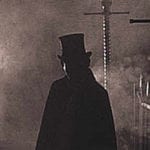 Music
Music  Music
Music  History
History 10 Less Than Jolly Events That Occurred on December 25
 Weird Stuff
Weird Stuff 10 Funny Ways That Researchers Overthink Christmas
 Politics
Politics 10 Political Scandals That Sent Crowds Into the Streets
 Weird Stuff
Weird Stuff Ten Bizarre Facts About The Doge Meme
 Our World
Our World 10 Ways Your Christmas Tree Is More Lit Than You Think
 Movies and TV
Movies and TV The 10 Coolest Stars to Set Sail on The Love Boat
 History
History 10 Things You Didn’t Know About the American National Anthem
 Technology
Technology Top 10 Everyday Tech Buzzwords That Hide a Darker Past
 Humans
Humans 10 Everyday Human Behaviors That Are Actually Survival Instincts
 Music
Music 10 Surprising Origin Stories of Your Favorite Holiday Songs
 History
History 10 Less Than Jolly Events That Occurred on December 25
 Weird Stuff
Weird Stuff 10 Funny Ways That Researchers Overthink Christmas
Who's Behind Listverse?

Jamie Frater
Head Editor
Jamie founded Listverse due to an insatiable desire to share fascinating, obscure, and bizarre facts. He has been a guest speaker on numerous national radio and television stations and is a five time published author.
More About Us Politics
Politics 10 Political Scandals That Sent Crowds Into the Streets
 Weird Stuff
Weird Stuff Ten Bizarre Facts About The Doge Meme
 Our World
Our World 10 Ways Your Christmas Tree Is More Lit Than You Think
 Movies and TV
Movies and TV The 10 Coolest Stars to Set Sail on The Love Boat
 History
History 10 Things You Didn’t Know About the American National Anthem
 Technology
Technology Top 10 Everyday Tech Buzzwords That Hide a Darker Past
 Humans
Humans 10 Everyday Human Behaviors That Are Actually Survival Instincts
Top 10 Things in the Victorian Home That Could Kill You
The Victorian Age lasted from 1837 to 1901 and was both a prosperous time for Britain and a tumultuous one at the same time. There were always epidemics of one disease or another going around, such as tuberculosis, scarlet fever, whooping cough, and cholera, among others. Yet, in complete contrast, great British inventions and innovations were leading the Victorians right out the front door of the Industrial Revolution and into the beyond.
Yet at the same time, technology was still rather primitive, and the sciences of the day had a lot of work to do, but it wouldn’t be long before they’d get there. Unfortunately, it just wouldn’t be fast enough for the tens of thousands of victims who perished for nothing but a gross lack of scientific knowledge, mixed in with more than just a bit of what can only be called recklessness, in blunders that could be comical if the outcomes weren’t so dreadfully terrible.
Related: 10 Gruesome And Shocking Facts About Victorian Surgery
10 Please Don’t Lick the Wallpaper, It’ll Kill Ya!
Victorian fashion reigned supreme at the time, with many magazines offering glimpses of the what-to-wear clothing for both men and women, highlighting many styles and colors like yellows, blues, reds, and greens. But gorgeous green gowns weren’t the only items getting attention from the British press during the Victorian Age. The literal “drop-dead” gorgeous green dye was used on a wide range of household items, from carpets to wallpaper and even clothes.
The problem is, the attention these green products were getting wasn’t just bad; it was dreadful, and to learn that it was a “staple” of the British press is somewhat disturbing. Apparently, people weren’t paying attention to the gruesome reports of thousands of horrible deaths being attributed to products dyed green in their local newspapers.
Speaking of paper, shades of brilliant green wallpaper were made wildly popular after Queen Victoria covered the walls of every room in Buckingham Palace with it. Unfortunately, these green products were being dyed with “Scheele’s Green Dye,” which was produced by using, of all things, arsenic—one of the most poisonous substances on the planet. All you had to do was breathe in a room papered and carpeted with the arsenic-laden products, and you’d be inhaling large amounts of arsenic-laden dust. This is one reason why the popular wallpaper killed so many thousands of people.
Mothers would have to stop their toddlers from eating pieces of wallpaper that chipped off after time due to Scheele’s Green Dye being so unstable. It was fatally beautiful, and a plethora of products colored with this arsenic-laden dye were produced. Sometime in the 1850s, a major manufacturer of these green products estimated there was up to 100 million square miles of arsenic-laden wallpaper in British households. After a thorough investigation, Scheele’s Green Dye was banned from use entirely, and Queen Victoria quickly had every scrap of it removed from Buckingham Palace.[1]
9 The Victorian Bathroom Could Cook You Alive
For Victorians, cleanliness was one of the most important things in life. Bodily fluids made them cringe, and odor? Oh no, that wasn’t happening, and they went out of their way to see that it didn’t. So it’s no wonder Victorians all but invented the “modern” bathroom. For the first time, Victorians had a room all their own to do their private business in. Before, bathtubs were filled with hot water either in the kitchen or in front of a roaring fireplace, so privacy was an issue and incentive for devising something akin to a lavatory.
After its invention, the gas bath was the most important item in the Victorian home. They were made from most likely cast iron and connected to a gas line that led to a burner underneath the tub. Since the thermostat hadn’t been invented yet, there was no temperature control, so you could boil yourself to death in one, and people did. Newspapers wrote articles about someone “dying by boiling” in their tubs, and the danger in the bathroom didn’t stop there… even the toilets could kill you.
Plumbing was still in its infancy, so the sewage systems of Victorian Age homes weren’t quite up to snuff. They didn’t have adequate vacuum to draw the waste away, which meant methane could build up inside the house. This gas, produced from decomposing human waste products, is highly flammable and can detonate when the correct air-to-methane ratio is achieved. Then all it took was a spark, and it’s all over but the crying![2]
8 The Lighting Was Brutal—They Burned Gas
A major improvement during Victorian times was the use of gas to light homes and businesses. Using these controllable gas light fixtures increased the length of the working day, and production of everything soared as a result. It was truly innovative but extremely hazardous to people’s health. It was Albert Winsor who first succeeded with gas lighting on a large scale. And it’s no wonder since he formed the Gas Light and Coke Company, which would end up being the most prominent gas company on the planet. However, it was still dangerous to use gas for lighting, especially since the thought of adding mercaptan to it so that it could be smelled when there’s a leak hadn’t been thought of yet.
The Victorians used two different types of gas—natural gas, similar to that we use today, and gas derived from coal. The problem with coal gas was that it was chemically lethal, containing highly flammable methane, hydrogen, noxious and toxic sulfur, and deadly carbon monoxide.
So not only could it burn your house down or blow it to smithereens, but it could also poison or suffocate you with carbon monoxide. Victorian news reporters were kept busy writing articles about the latest house fires caused by improper usage of gas lighting, explosions, or death from gas leaks, and being overexposed to the carbon monoxide and sulfurous fumes from coal gas. Again, thousands perished in several ways from gas lighting.[3]
7 Painting the Way for Lead in Victorian England
If you live in a house constructed before 1978, then there’s a chance that there’s lead-based paint on the walls or woodwork somewhere. Britain introduced the world to lead-based paints since they found it was a great additive for the paint to be used exteriorly on steel structures to prevent rust. Still, they should’ve never introduced it to interior paint for residential use.
Back in Victorian times, people didn’t know how dangerous and toxic this soft and heavy element was. And since the owners of lead mines needed more uses for their product, it was introduced into a wide variety of household items, from paints to wallpaper end even children’s toys. Unfortunately, these products were painted their pretty eye-pleasing colors with lead-based paint—a lethal combination for Victorian babies, who, as all parents know, put everything in their mouths.
The biggest problem with using lead-based paint on toys for kids is that lead has a sweet taste, which encourages youngsters to suck on a toy due to its taste. It can sometimes lead to a condition called “pica,” which is dangerous for any child. Eventually, the British government could see from the newspaper reports on the mysterious deaths of children that something was terribly wrong. This sparked an investigation that led to lead-based paint as the cause and eventually the banning of its use.[4]
6 “You Could Break Your Neck Doing That!”
Housing first became a major problem during the Victorian era, when officials realized they needed more places for the growing population to live. To maximize available acreage, they built apartment buildings closer together, narrower, and higher. This ended up having a deadly effect on the staircases built into these buildings since they had to be constructed both cheaply and quickly. They also had to be taller and steeper than in most builds due to how they were built to save space.
Stairs that led to the lowest apartments in a building would be the steepest and were made from the cheapest wood that could be bought. Some staircases were both excessively steep and made from inferior materials without handrails. It was so bad that thousands of Victorians met their demise by taking a deadly dive down a flight of steep stairs. As could be expected, the most common injury the victims suffered from was a broken neck. Today thousands of people in Britain are still dying to get down the stairs—those same stairs from the Victorian era—by the thousands.[5]
5 Your Wife’s Vanity Could Kill You
In Victorian England, your wife’s vanity could kill the entire family without her doing a thing wrong, except buying something she didn’t know would kill her family and herself. This is the sad truth about an invention called Parkesine in 1862. Alexander Parkes, a British inventor, came up with Parkesine to fill the void for a product that was both durable and able to be molded into any shape. And he succeeded, kind of.
Parkesine, a precursor to plastic, soon to become known as celluloid, has a really nasty habit—it was so volatile that it would spontaneously burst into flames. By being so highly explosive, if it was somehow introduced to open flame, it would blow up! Your poor wife could burn the house down because she was trying to save the family money by not paying for beauty accessories made from expensive ivory or tortoise shell. It didn’t always work, and people died.[6]
4 The Women Had Killer Beauty Products—Literally
A Victorian woman had plenty of beautifying products available to her. First, she could head out and buy some camphor-laden toothpaste—guaranteed to whiten her smile. Never mind that swallowing spirits of camphor could kill a person; she just has to make doubly sure to spit. A Victorian lady could also go out and get that latest color of eyeshadow, or “eye powder,” as they insisted it was since only ladies of the night wore eye “shadow.” After all, her brand was made from natural ingredients, like mercury, lead, and crushed cochineal beetles.
Since to Victorian women, dilated pupils were all the rage, they’d go out and buy a bottle of “Extract [of] Belladonna Leaves” to drop into her eyes for that perfect dilated-pupil-junky-like look they were all after. They must not have been aware of the fact that belladonna is derived from deadly nightshade—called “deadly” for a purpose—because it is. And if a girl needed to lose weight? Simple.
She could just swallow some live tapeworm larvae—they did come “jar packed,” you know. And they’d go right to work, depleting her body of all the life-sustaining calories, proteins, fiber, fat, vitamins, minerals, and nutrients needed to survive. She’d starve with a four-course meal sitting right in front of her and five-foot-long tapeworms in her bowels eating her to death. If a woman in Victorian England went too crazy with beauty products, the only thing that would end up looking good was her corpse at her funeral.[7]
3 Laudanum—The Victorian’s Aspirin
In Victorian England, laudanum was the go-to choice for any ailments one could suffer from. For that reason and more, the concoction was probably England’s most common medicine… and most potent. It was an extremely powerful compound mixture of codeine, morphine, and alcohol and was frightfully addictive.
Typically, laudanum was 10% opium with as much as 50% alcohol added—a very strong brew indeed! Since the stuff was so bitter to the taste, it was often flavored with a variable menagerie of things to make it taste better, such as honey, spices, whiskey, wine, brandy, chloroform, ether, hashish, and even mercury. The recommended adult dosage was 10 to 30 drops depending on the strength of the brand.
Laudanum was marketed directly at women for headaches, menstrual cramps, and “hysteria.” Ironically, many people were probably taking laudanum for ailments caused by their arsenic-laden wallpaper and arsenic-laden carpets. Being so highly addictive, people became dependent on it quickly since it was the only “cure-all” on the market that actually seemed to work. It was advertised to cure so much. In addition, it was an era of epidemics, and diarrhea and dysentery were a part of life. Victorians had plenty of ailments to cure with laudanum.
The Victorian era medical technology was rudimentary, and pain from toothaches, headaches, and menstrual pain was common and required relief, and laudanum was the answer for many. Once a laudanum addiction got so bad, the only thing to do was get off it or die. That required one to go through terrible and sometimes life-threatening withdrawal symptoms such as hallucinations, tremors, sneezing, watery eyes, cold chills, and sweats. Since it was so easily attainable, people overdosed on it quite frequently.[8]
2 Mom Went Shopping, So Someone Has to Die!
More deadly items were brought into the Victorian household than were ever in it before the residents moved in, bathrooms, vanities and staircases aside. In the 1880s, women could go to do their shopping and come home with goodies such as small candies made with potassium chlorate. Then there was some of that new-fangled powdered lemonade that came in a “billy can,” which could contain antimony that the acidic lemonade powder would dissolve, making it toxic. Although not lethal, antimony can cause problems with the stomach, lungs, and heart.
A mother could also bring home some “Mrs. Wilmslow’s Soothing Syrup” for her baby. It probably worked well for her and stopped her croupy baby from crying in just a few minutes. It also knocked the little one out like a light just as fast, especially since this “soothing syrup” contained morphine.
If a woman’s in a cleaning mood, she might bring home some house-cleaning powders containing carbolic acid, which, if ingested, could be fatal. It came in packages almost identical to many food items, so it could easily be used by mistake. In a horrific accidental poisoning, this fact came to light in September 1888. An article in the Aberdeen Evening Express reported that in a single event, 13 people were accidentally poisoned with carbolic acid, and five died.[9]
1 Murder Bottles—Dirty Bombs for Babies
In Victorian England, a mother was considered to be totally responsible for the death of her child. She was judged by society on how many had survived. In 1861, a book written by Isabella Beeton entitled Mrs. Beeton’s Household Management came out—a very popular “how-to” guide on how to run a Victorian household. In the book, Beeton invested two chapters on babies and their proper care. The book instructed young mothers on how best to breastfeed—recommending drinking beer in not-so-moderate amounts—and what to do if unable to breastfeed.
The mass marketing of baby-feeding bottles, coupled with the popularity of Beeton’s book, pressured many mothers not to breastfeed. This obviously sent sales of baby bottles through the roof, so there had to be tens if not hundreds of millions of them in Britain. Unfortunately, many were basically dirty bombs for babies and would eventually be given the icy moniker of “murder bottles.”
The truth is that a design defect and an inferior porous material for the nipple ring caused the problems. This porous material both collected bacteria like a sponge and then promoted its growth while not being able to be washed out. They were also made in a slanted shape that was hard to clean, and old milk could be left on the bottom of the bottle.
Babies drinking from infected ones were at a high risk of contracting any number of fatal diseases such as typhoid, serious bowel infections, dysentery, intestinal diseases, and infant pneumonia, among others. Sadly, for both the babies and their mothers, many thousands of them didn’t stand a chance and died with nobody knowing why.[10]








